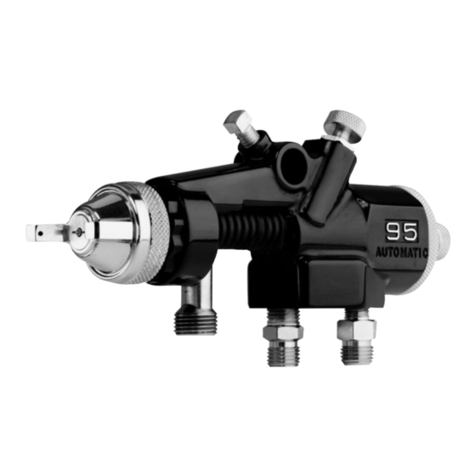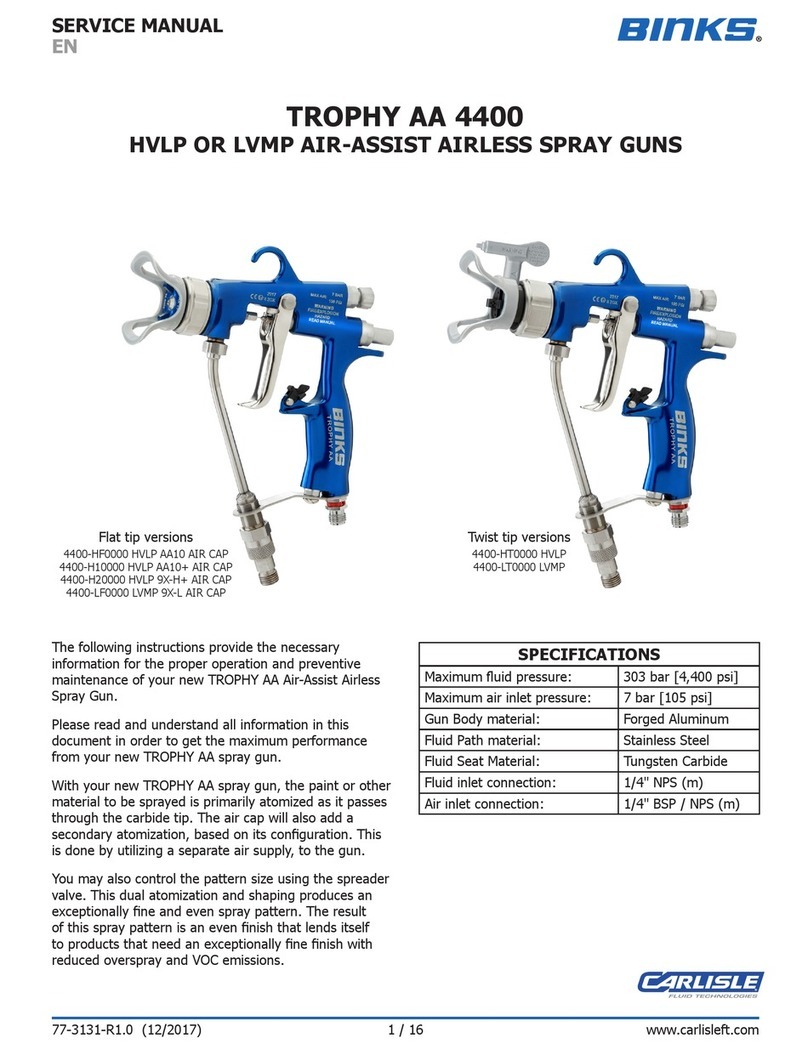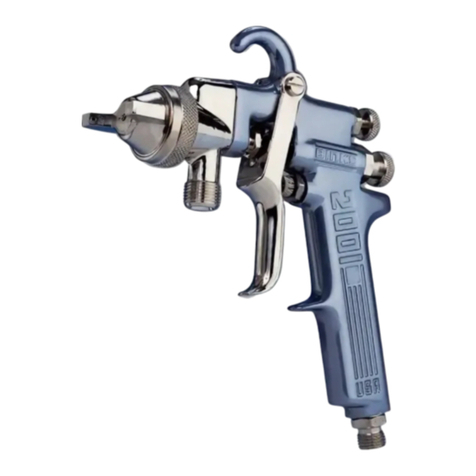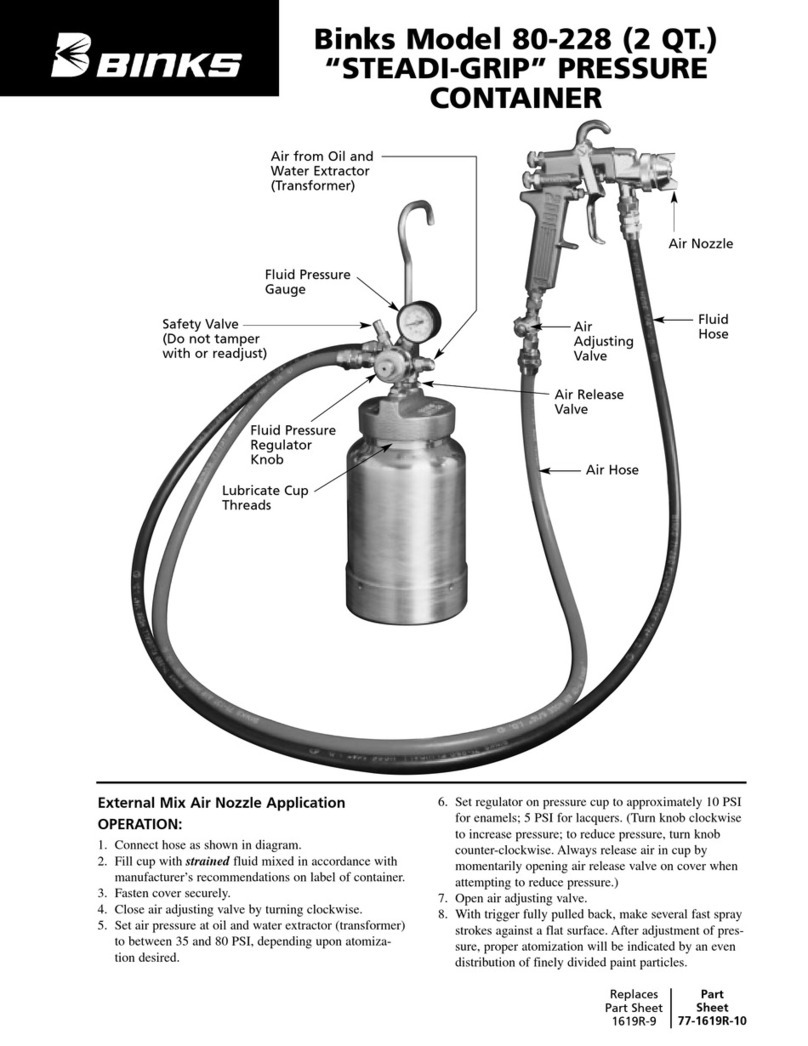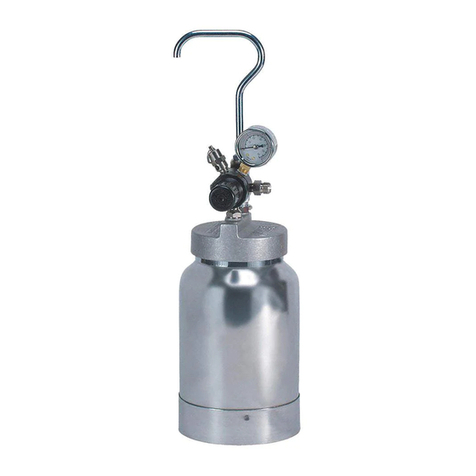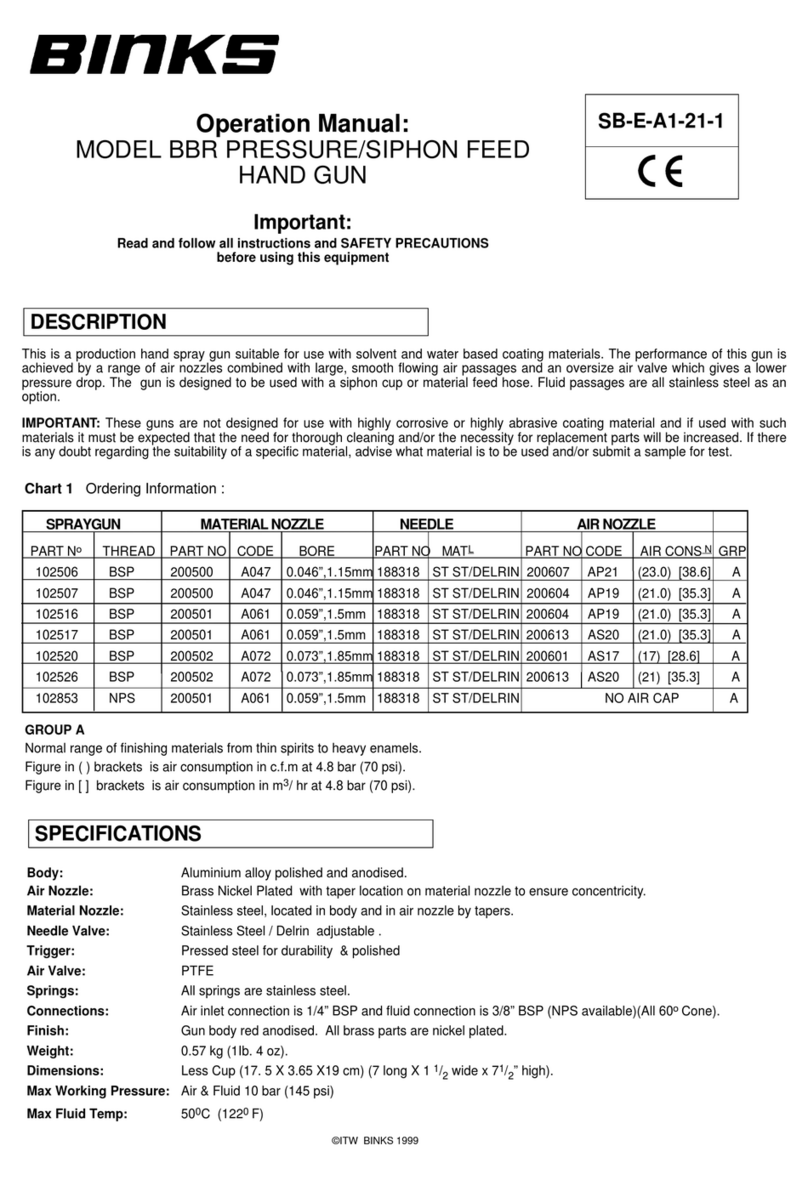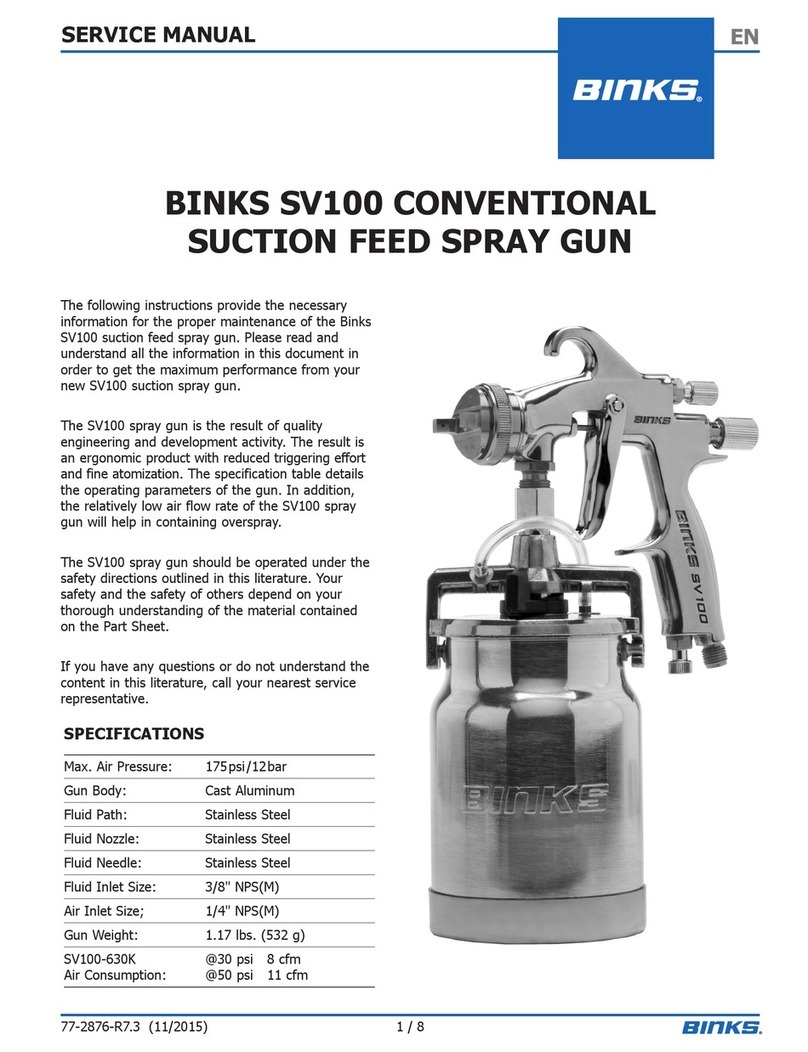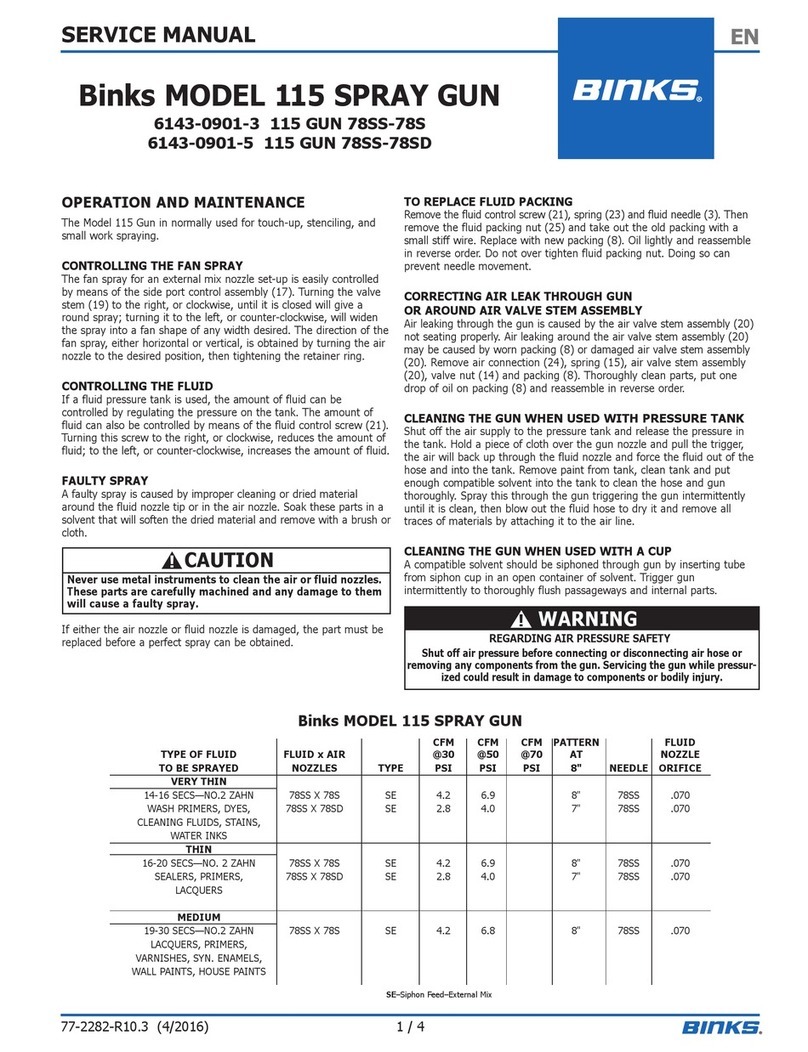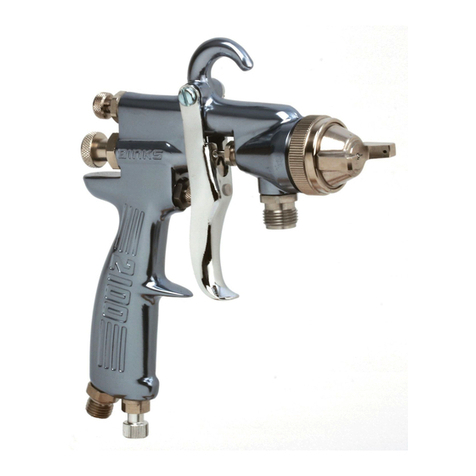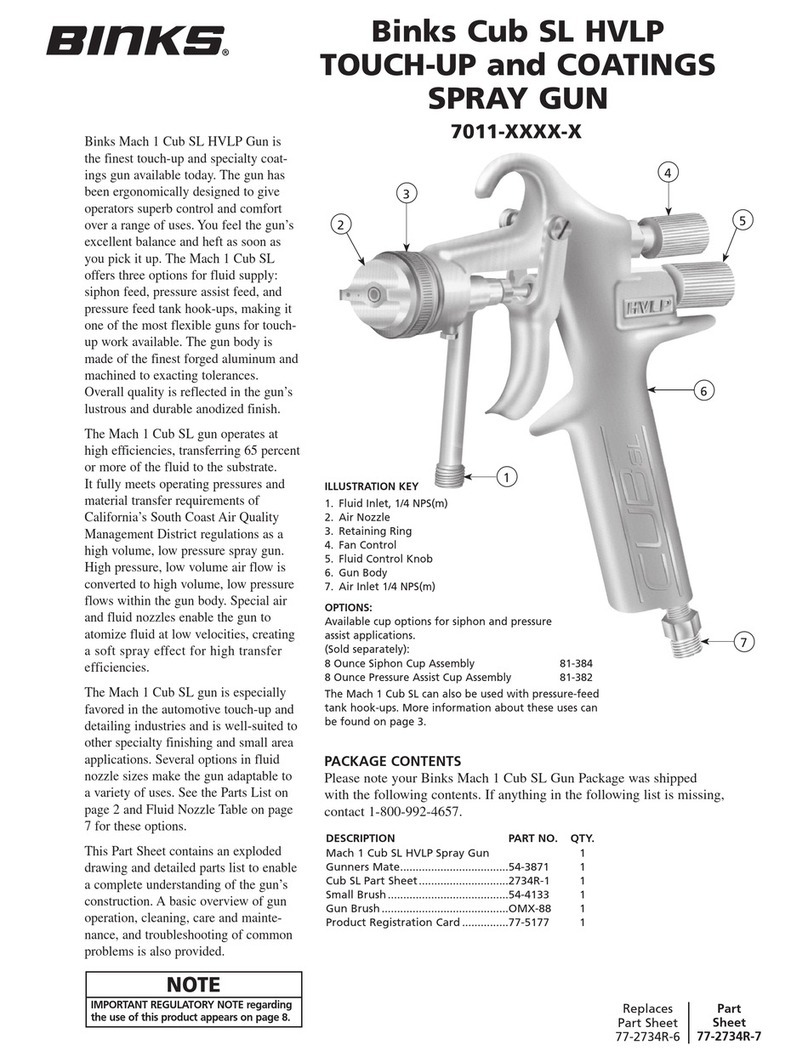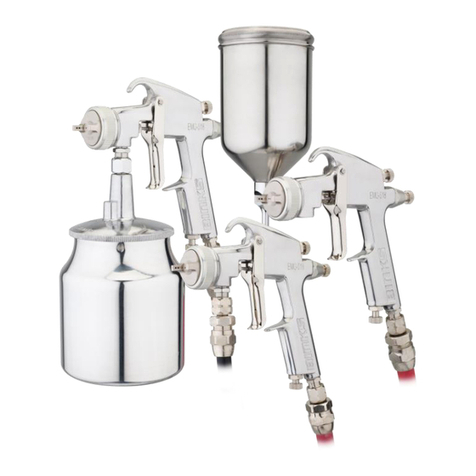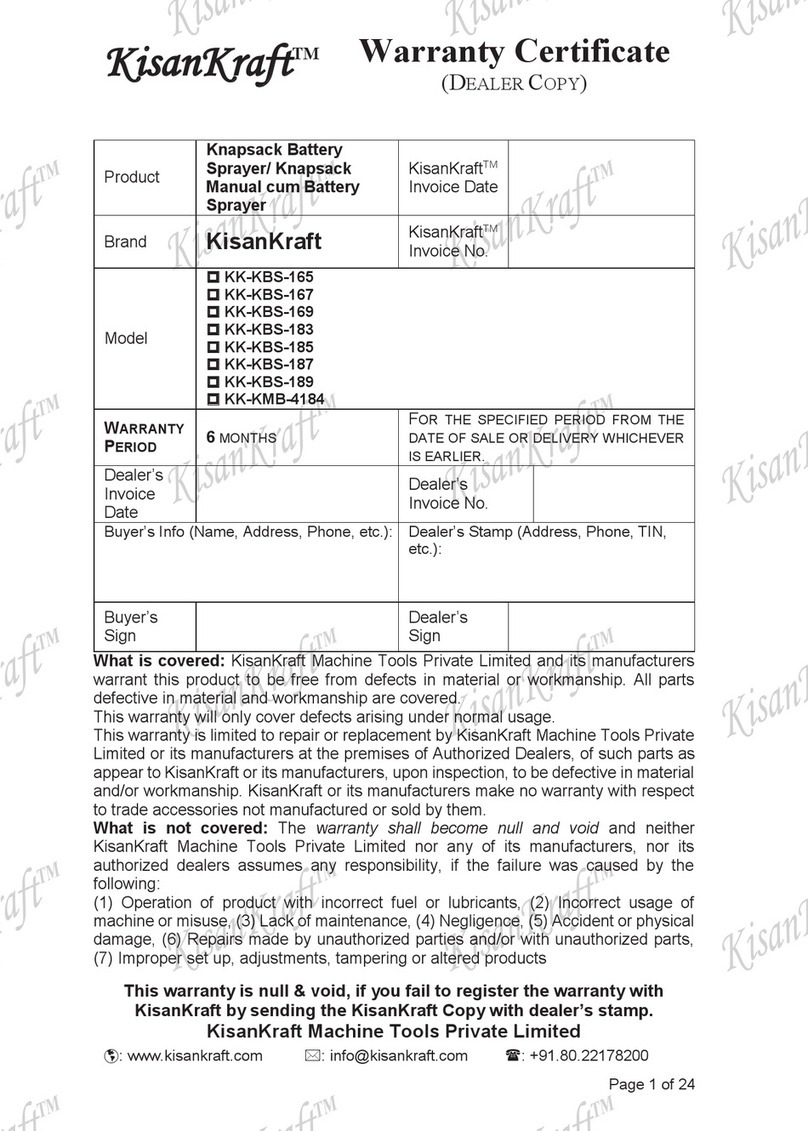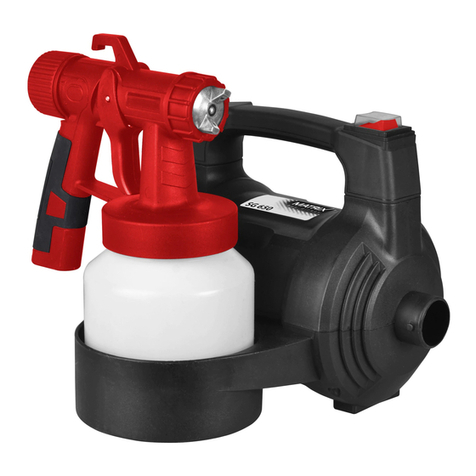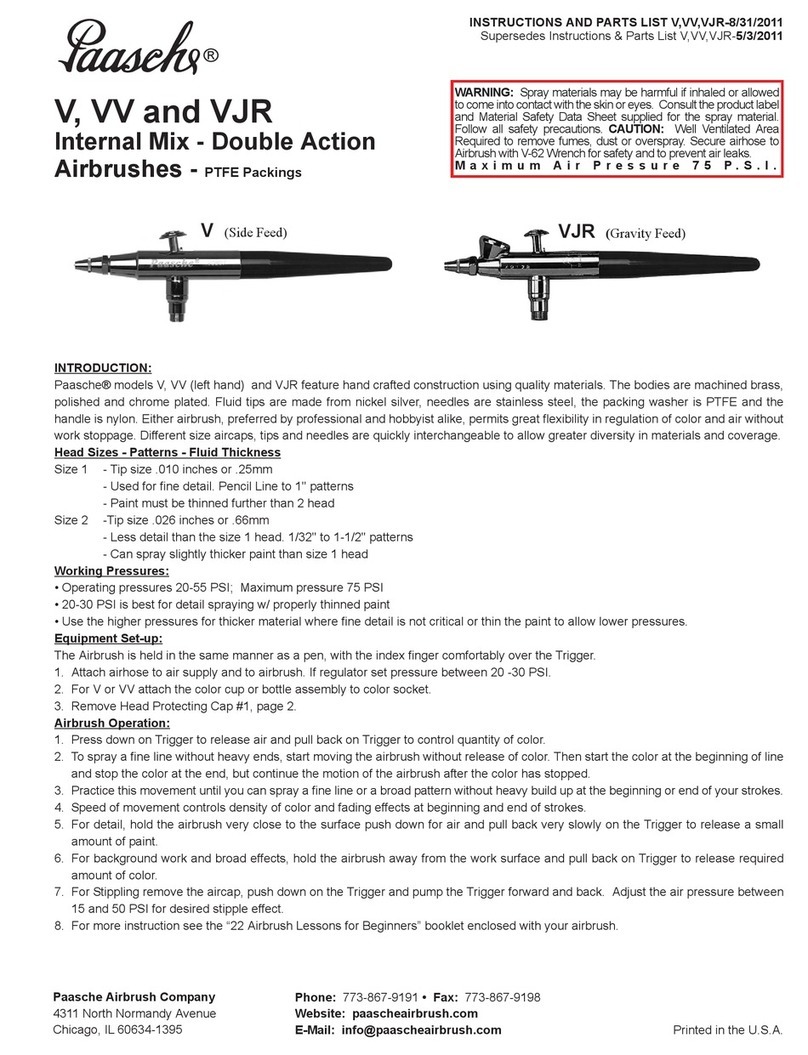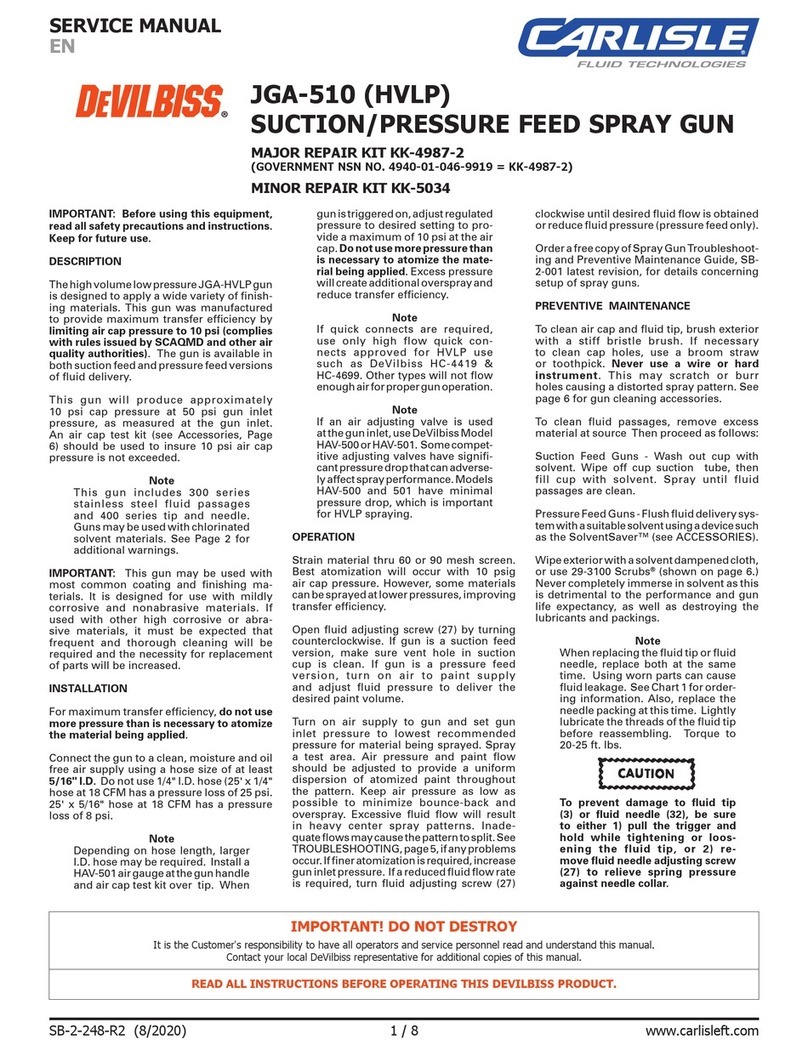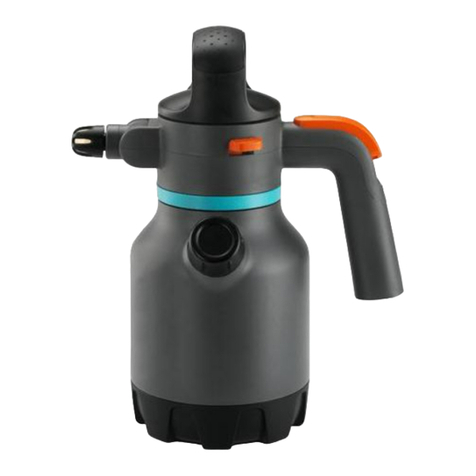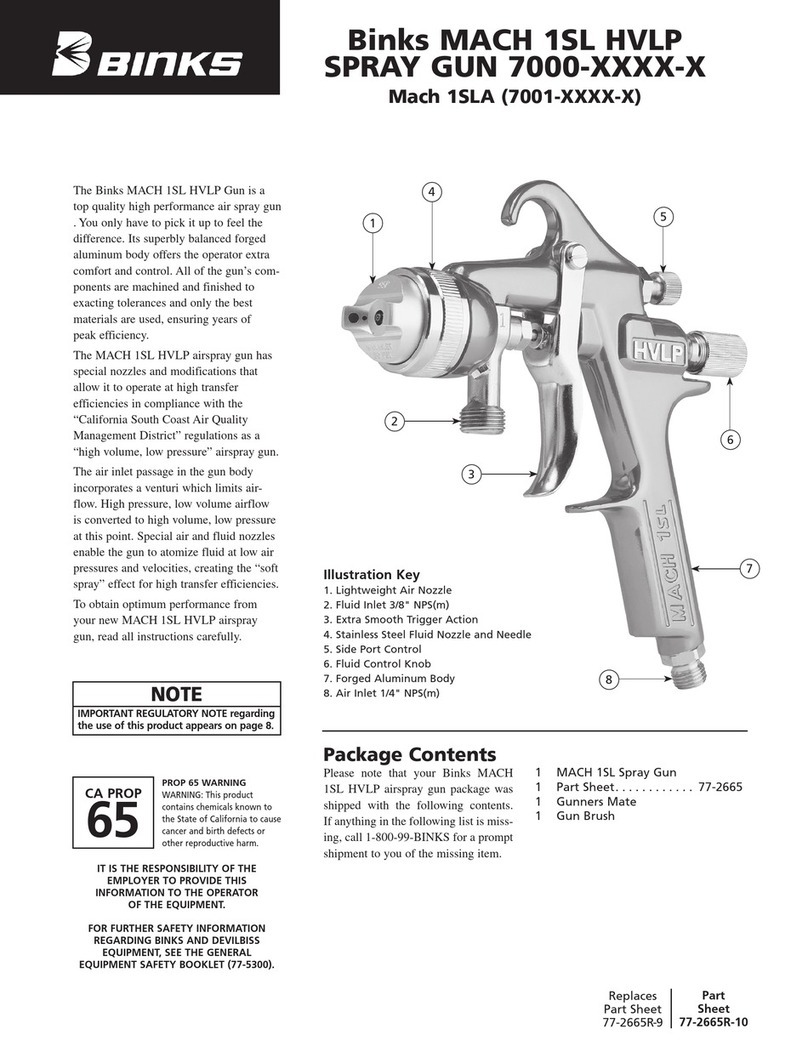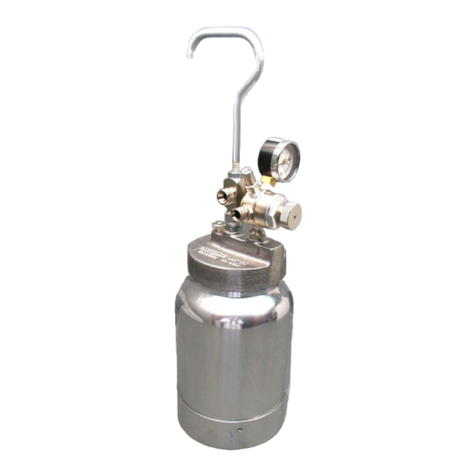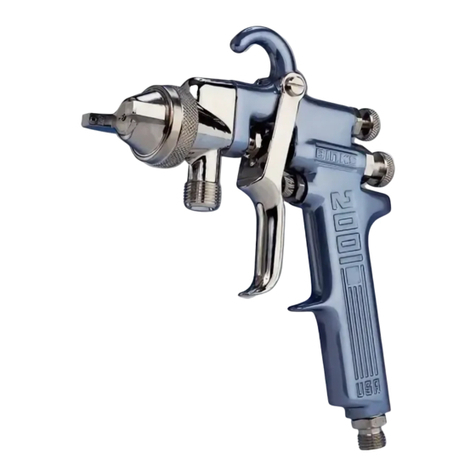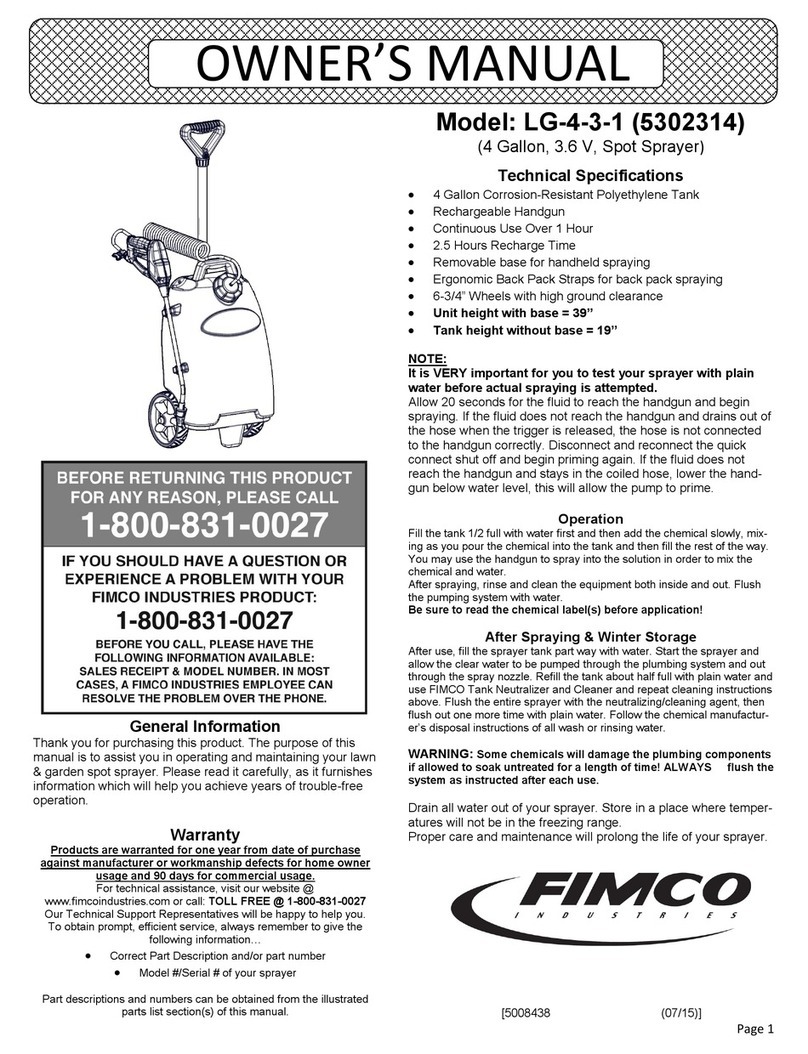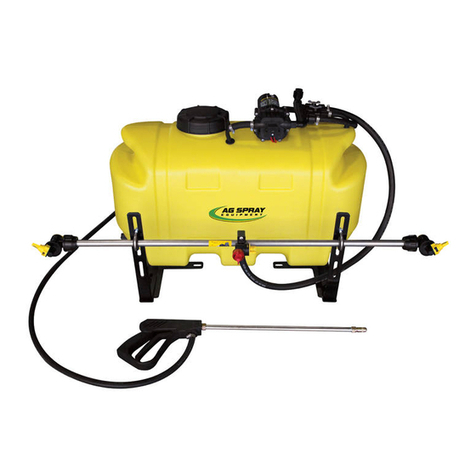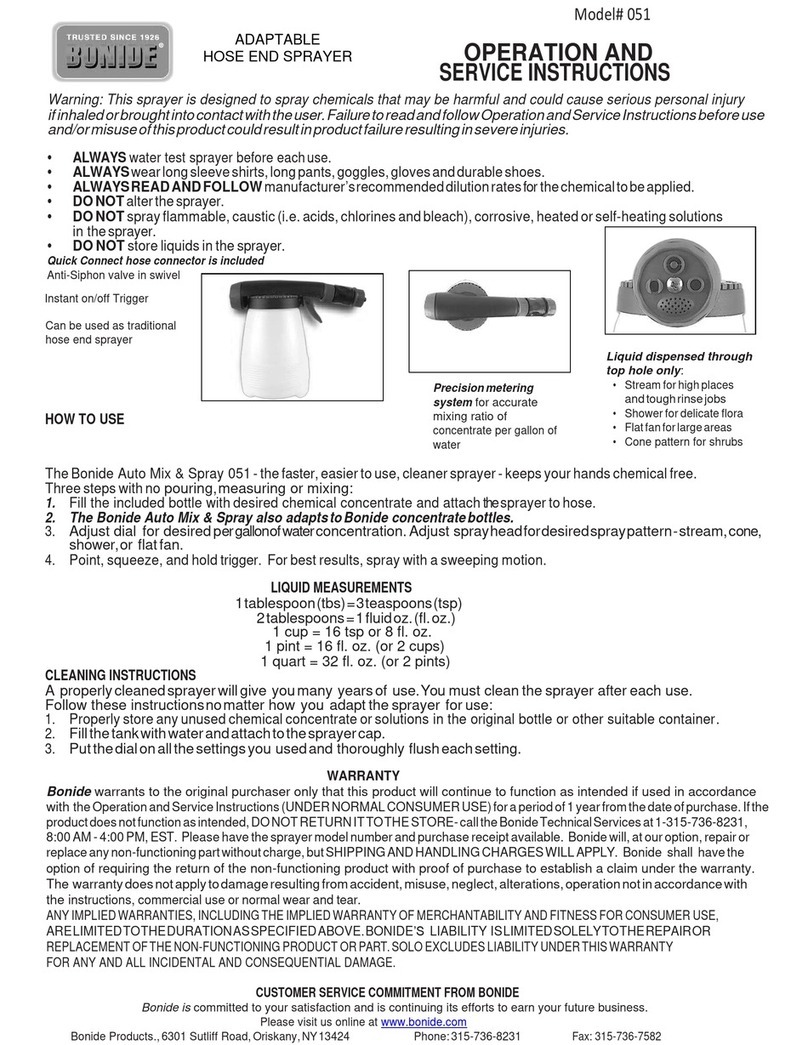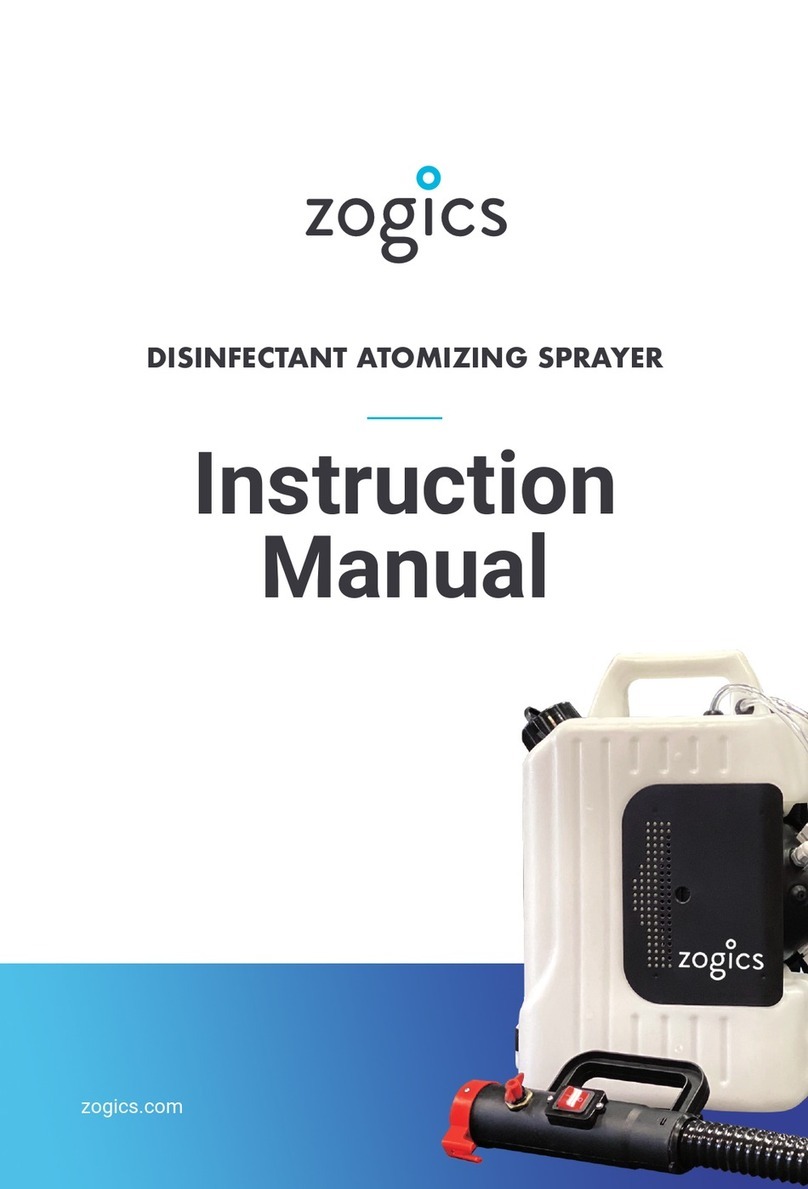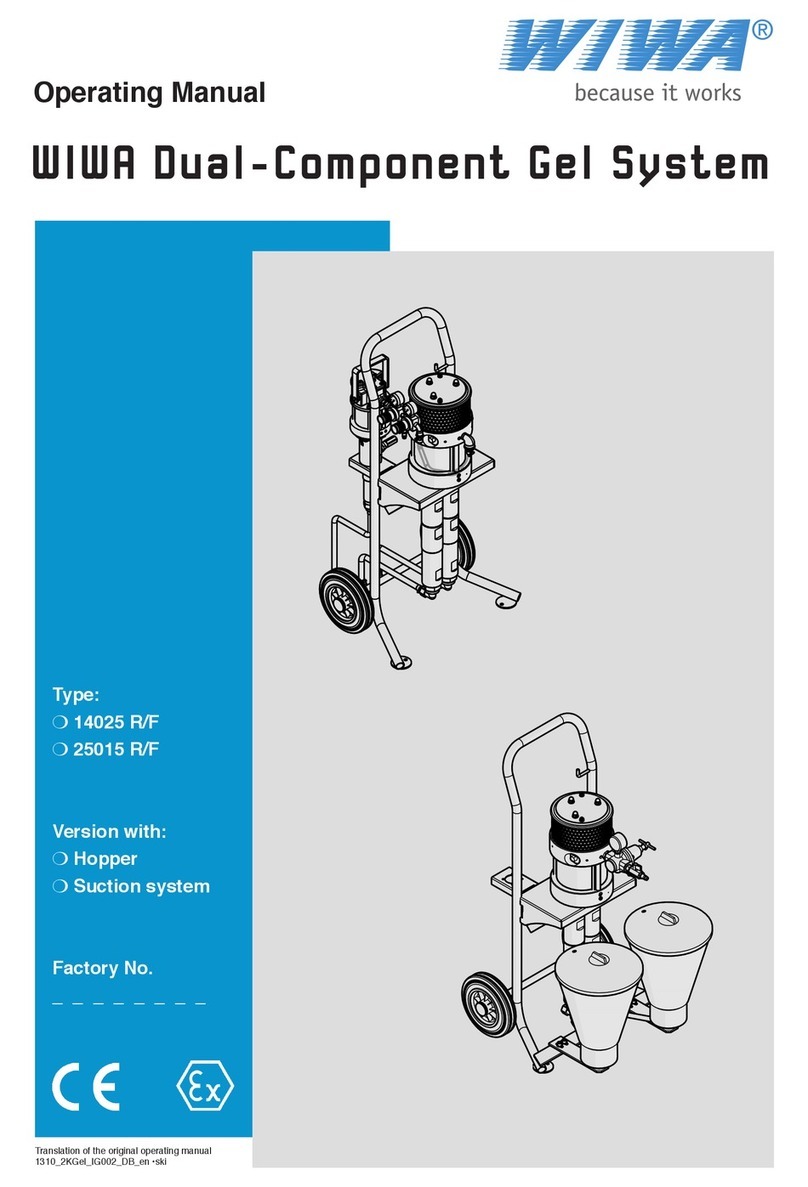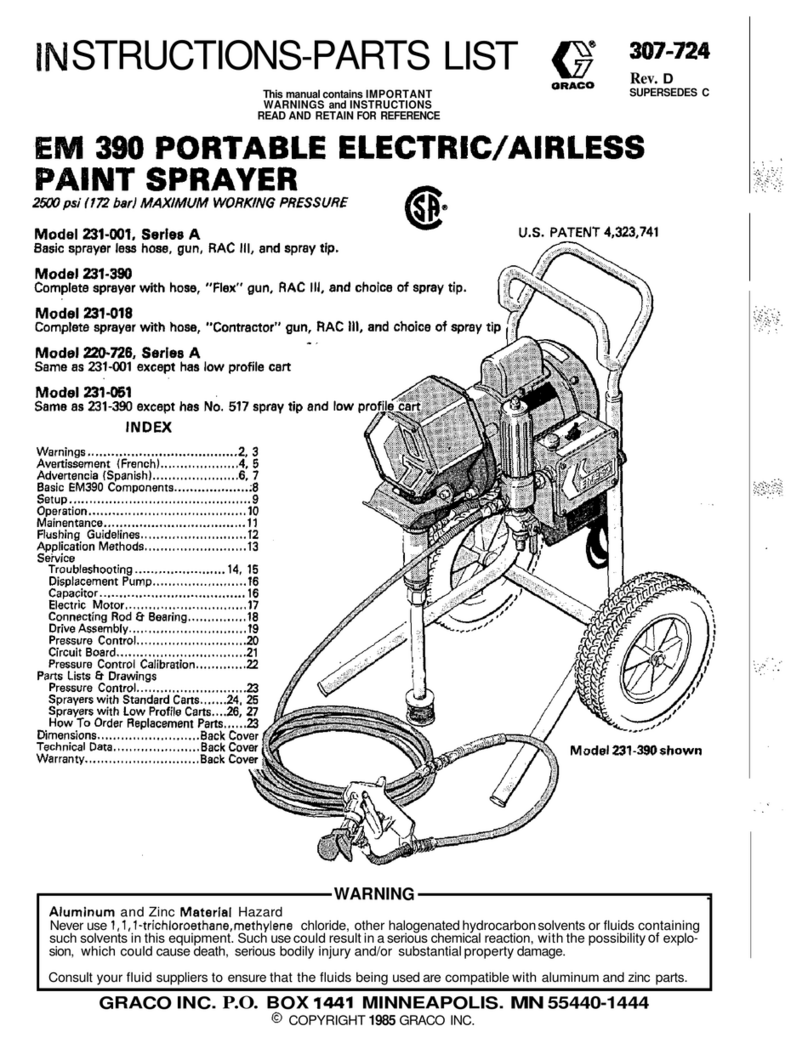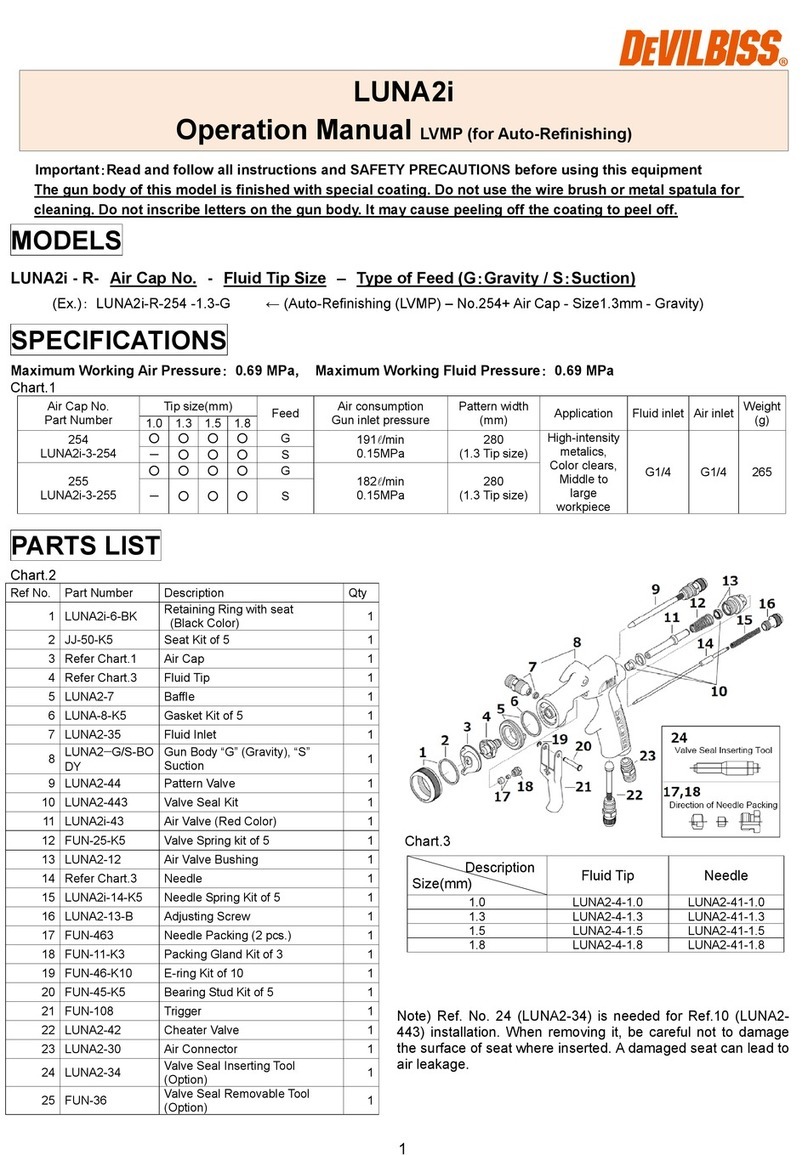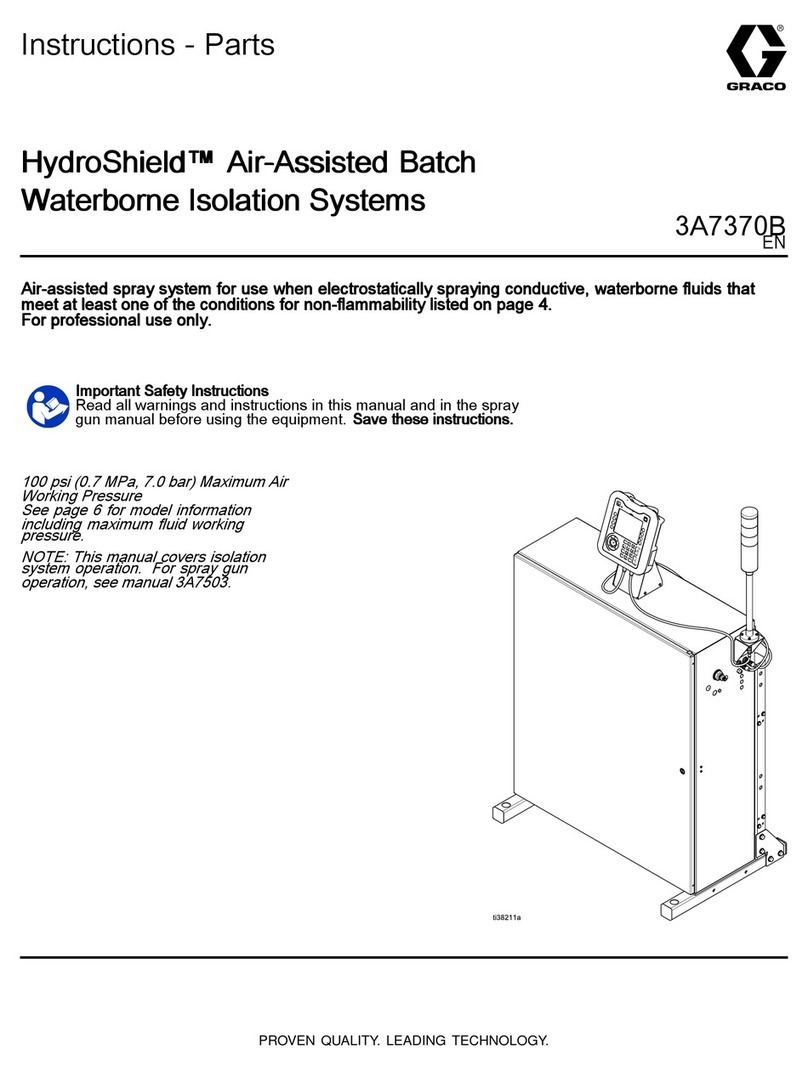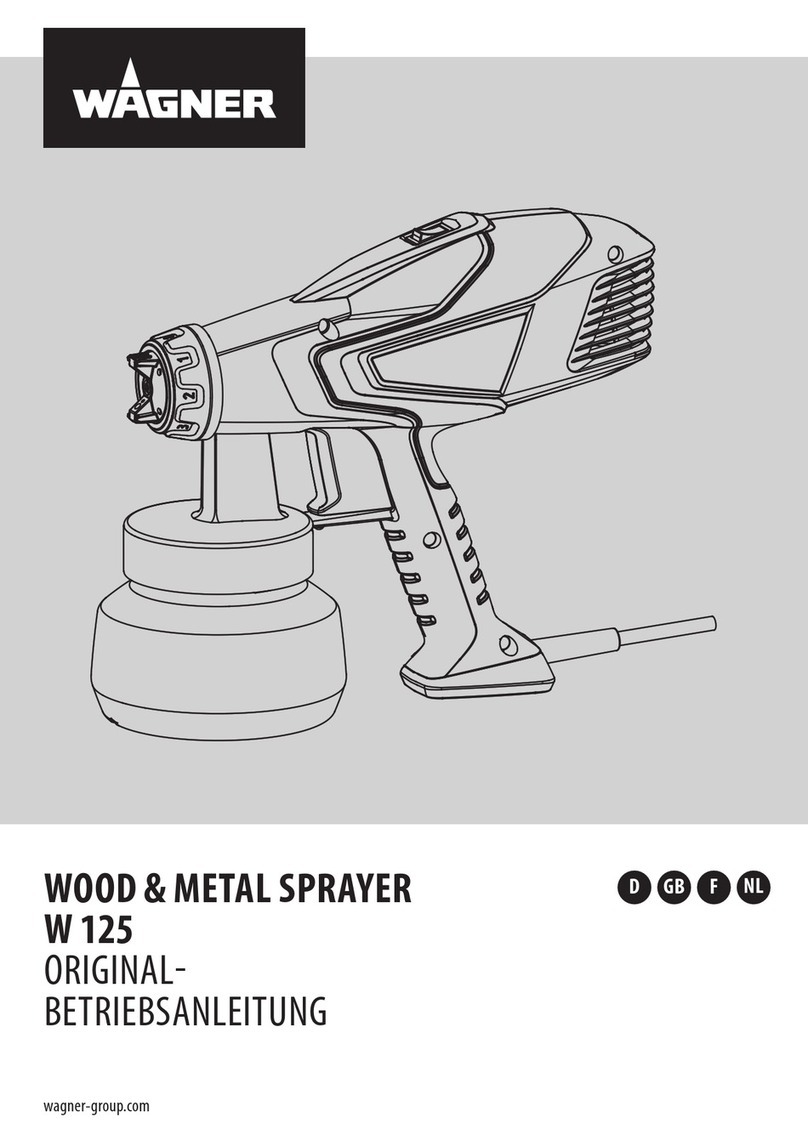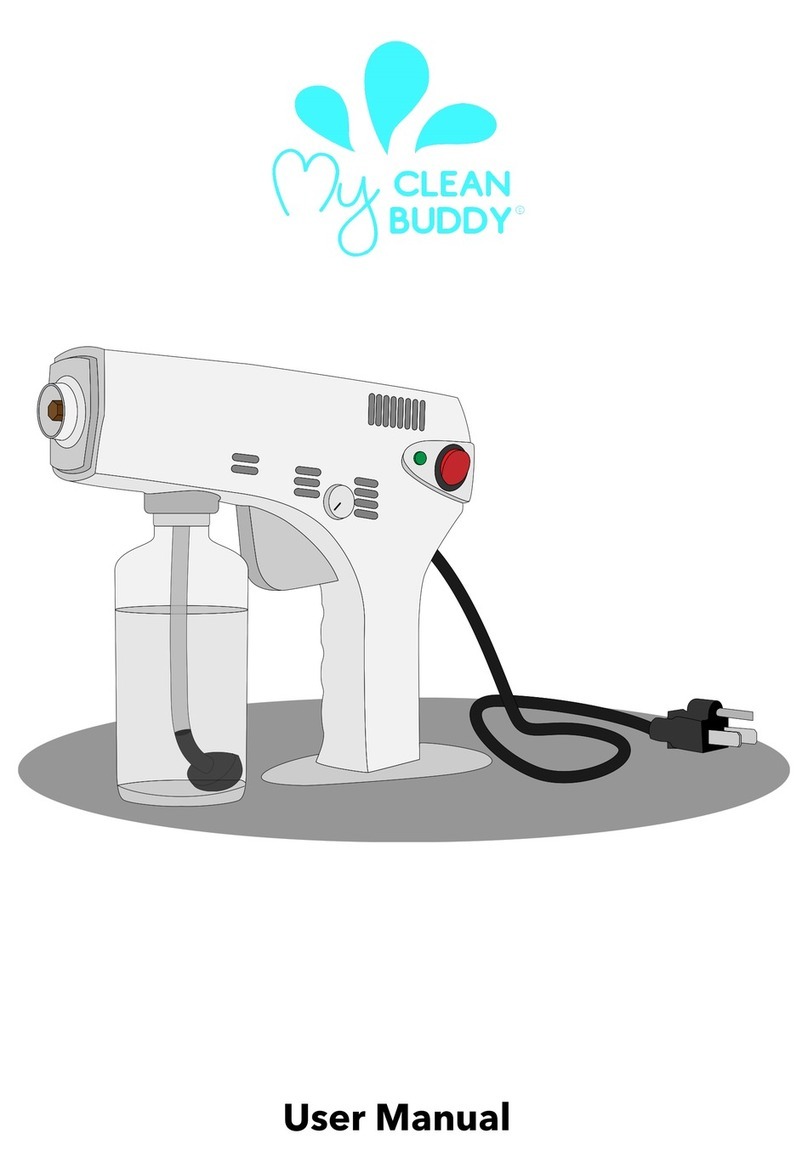
10
STANDARD FLAT TIP SELECTION CHARTS
GPM
FAN CAPACITY
WIDTH @500 PSI
PART NUMBER DESCRIPTION ORIFICE (IN.) WATER
114-00702 TIP ASSEMBLY .007 2 .028
114-00704 TIP ASSEMBLY .007 4 .028
114-00706 TIP ASSEMBLY .007 6 .028
114-00708 TIP ASSEMBLY .007 8 .028
114-00902 TIP ASSEMBLY .009 2 .039
114-00906 TIP ASSEMBLY .009 6 .039
114-00908 TIP ASSEMBLY .009 8 .039
114-00910 TIP ASSEMBLY .009 10 .039
114-00912 TIP ASSEMBLY .009 12 .039
114-01104 TIP ASSEMBLY .011 4 .060
114-01106 TIP ASSEMBLY .011 6 .060
114-01108 TIP ASSEMBLY .011 8 .060
114-01110 TIP ASSEMBLY .011 10 .060
114-01112 TIP ASSEMBLY .011 12 .060
114-01114 TIP ASSEMBLY .011 14 .060
114-01304 TIP ASSEMBLY .013 4 .090
114-01306 TIP ASSEMBLY .013 6 .090
114-01308 TIP ASSEMBLY .013 8 .090
114-01310 TIP ASSEMBLY .013 10 .090
114-01312 TIP ASSEMBLY .013 12 .090
114-01314 TIP ASSEMBLY .013 14 .090
114-01316 TIP ASSEMBLY .013 16 .090
114-01506 TIP ASSEMBLY .015 6 .120
114-01508 TIP ASSEMBLY .015 8 .120
114-01510 TIP ASSEMBLY .015 10 .120
114-01512 TIP ASSEMBLY .015 12 .120
114-01514 TIP ASSEMBLY .015 14 .120
114-01516 TIP ASSEMBLY .015 16 .120
114-01518 TIP ASSEMBLY .015 18 .120
114-01706 TIP ASSEMBLY .017 6 .160
114-01708 TIP ASSEMBLY .017 8 .160
114-01710 TIP ASSEMBLY .017 10 .160
114-01712 TIP ASSEMBLY .017 12 .160
114-01714 TIP ASSEMBLY .017 14 .160
114-01716 TIP ASSEMBLY .017 16 .160
114-01718 TIP ASSEMBLY .017 18 .160
114-01906 TIP ASSEMBLY .019 6 .190
114-01908 TIP ASSEMBLY .019 8 .190
114-01910 TIP ASSEMBLY .019 10 .190
114-01912 TIP ASSEMBLY .019 12 .190
114-01914 TIP ASSEMBLY .019 14 .190
114-01916 TIP ASSEMBLY .019 16 .190
114-01918 TIP ASSEMBLY .019 18 .190
114-02110 TIP ASSEMBLY .021 10 .240
114-02112 TIP ASSEMBLY .021 12 .240
114-02114 TIP ASSEMBLY .021 14 .240
114-02116 TIP ASSEMBLY .021 16 .240
114-02118 TIP ASSEMBLY .021 18 .240
114-02410 TIP ASSEMBLY .024 10 .310
114-02412 TIP ASSEMBLY .024 12 .310
114-02414 TIP ASSEMBLY .024 14 .310
114-02416 TIP ASSEMBLY .024 16 .310
114-02418 TIP ASSEMBLY .024 18 .310
114-02710 TIP ASSEMBLY .027 10 .385
114-02712 TIP ASSEMBLY .027 12 .385
114-02714 TIP ASSEMBLY .027 14 .385
114-02716 TIP ASSEMBLY .027 16 .385
114-02718 TIP ASSEMBLY .027 18 .385
Fan width based on 1000 PSI with water
12" from surface. Actual results may vary,
depending on material viscosity.
FINE FINISH FLAT TIP SELECTION CHARTS
GPM
FAN CAPACITY
WIDTH @500 PSI
PART NUMBER DESCRIPTION ORIFICE (IN.) WATER
9-0909-F FINE FINISH TIP 0.009 9 0.039
9-0911-F FINE FINISH TIP 0.009 11 0.039
9-1109-F FINE FINISH TIP 0.011 9 0.06
9-1111-F FINE FINISH TIP 0.011 11 0.06
9-1113-F FINE FINISH TIP 0.011 13 0.06
9-1115-F FINE FINISH TIP 0.011 15 0.06
9-1309-F FINE FINISH TIP 0.013 9 0.09
9-1311-F FINE FINISH TIP 0.013 11 0.09
9-1313-F FINE FINISH TIP 0.013 13 0.09
9-1315-F FINE FINISH TIP 0.013 15 0.09
9-1509-F FINE FINISH TIP 0.015 9 0.12
9-1511-F FINE FINISH TIP 0.015 11 0.12
9-1513-F FINE FINISH TIP 0.015 13 0.12
9-1515-F FINE FINISH TIP 0.015 15 0.12
9-1517-F FINE FINISH TIP 0.015 17 0.12
9-1709-F FINE FINISH TIP 0.017 9 0.16
9-1711-F FINE FINISH TIP 0.017 11 0.16
9-1713-F FINE FINISH TIP 0.017 13 0.16
9-1715-F FINE FINISH TIP 0.017 15 0.16
9-1717-F FINE FINISH TIP 0.017 17 0.16
Fan width based on 1000 PSI with water 12" from
surface. Actual results may vary, depending on
material viscosity.
FULL GUN ASSEMBLIES
DESCRIPTION ASS'Y NUMBER
AA1600M HVLP FLAT TIP GUN ASSEMBLY (NO TIP INCL.) 0909-1600-HF0000
AA1600M HVLP FLAT TIP GUN ASSEMBLY (W/114-01310 TIP) 0909-1600-HF1310
AA1600M HVLP FLAT TIP GUN ASSEMBLY (W/114-01510 TIP) 0909-1600-HF1510
AA1600M HVLP FLAT TIP GUN ASSEMBLY (W/114-01514 TIP) 0909-1600-HF1514
DESCRIPTION ASS'Y NUMBER
AA1600M HVLP TWIST TIP GUN ASSEMBLY (NO TIP INCL.) 0909-1600-HT0000
AA1600M HVLP TWIST TIP GUN ASSEMBLY (W/9-613-75 TIP) 0909-1600-HT0613
AA1600M HVLP TWIST TIP GUN ASSEMBLY (W/9-615-75 TIP) 0909-1600-HT0615
AA1600M HVLP TWIST TIP GUN ASSEMBLY (W/9-715-75 TIP) 0909-1600-HT0715
tWIst tIp nOtE
When switching from flat tip to twist tip, increase pattern
size by 2 inches and use air adjustment to turn down to
desired size.
TWIST TIP SELECTION CHARTS
FAN GPM
WIDTH CAPACITY
PART NUMBER DESCRIPTION ORIFICE (IN.) @2200 PSI
9-307-75 TWIST TIP .007 6 0.05
9-309-75 TWIST TIP .009 6 0.09
9-409-75 TWIST TIP .009 8 0.09
9-509-75 TWIST TIP .009 10 0.09
9-211-75 TWIST TIP .011 4 0.12
9-311-75 TWIST TIP .011 6 0.12
9-411-75 TWIST TIP .011 8 0.12
9-511-75 TWIST TIP .011 10 0.12
9-611-75 TWIST TIP .011 12 0.12
9-213-75 TWIST TIP .013 4 0.18
9-313-75 TWIST TIP .013 6 0.18
9-413-75 TWIST TIP .013 8 0.18
9-513-75 TWIST TIP .013 10 0.18
9-613-75 TWIST TIP .013 12 0.18
9-713-75 TWIST TIP .013 14 0.18
9-215-75 TWIST TIP .015 4 0.24
9-315-75 TWIST TIP .015 6 0.24
9-415-75 TWIST TIP .015 8 0.24
9-515-75 TWIST TIP .015 10 0.24
9-615-75 TWIST TIP .015 12 0.24
9-715-75 TWIST TIP .015 14 0.24
9-217-75 TWIST TIP .017 4 0.31
9-317-75 TWIST TIP .017 6 0.31
9-417-75 TWIST TIP .017 8 0.31
9-517-75 TWIST TIP .017 10 0.31
9-617-75 TWIST TIP .017 12 0.31
9-717-75 TWIST TIP .017 14 0.31
9-419-75 TWIST TIP .019 8 0.38
9-519-75 TWIST TIP .019 10 0.38
9-619-75 TWIST TIP .019 12 0.38
9-421-75 TWIST TIP .021 8 0.47
9-521-75 TWIST TIP .021 10 0.47
9-621-75 TWIST TIP .021 12 0.47
9-523-75 TWIST TIP .023 10 0.57
9-623-75 TWIST TIP .023 12 0.57
9-525-75 TWIST TIP .025 10 0.67
9-625-75 TWIST TIP .025 12 0.67
9-627-75 TWIST TIP .027 12 0.74
9-631-75 TWIST TIP .031 12 1.03
9-435-75 TWIST TIP .035 8 1.31
9-635-75 TWIST TIP .035 12 1.31
Fan width based on 2200 PSI with latex paint 12" from
surface. Actual results may vary, depending on material
viscosity.
